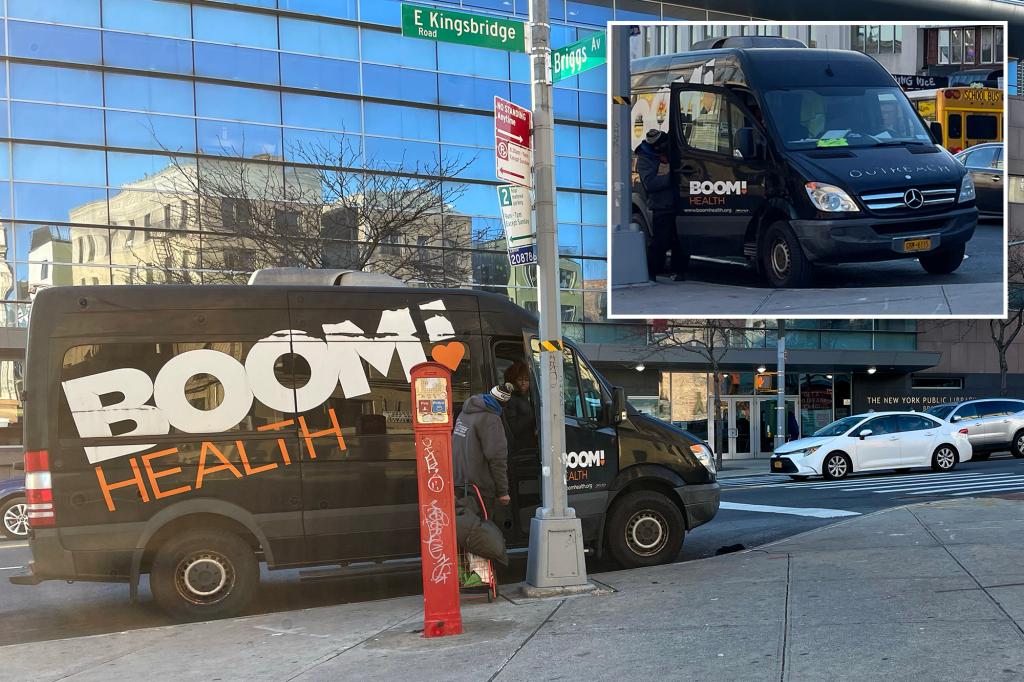The Bronx Library Center, a vital community resource, has become the focal point of a heated debate concerning the placement of a city-sponsored needle exchange program directly across the street. Local residents, along with Bronx Councilman Oswald Feliz, have voiced vehement opposition to the program’s location, citing concerns about public safety, child welfare, and the normalization of drug use. While acknowledging the public health benefits of harm reduction strategies like needle exchange programs, they argue that positioning such a program in front of a children’s library is irresponsible and undermines the very purpose of the library as a safe and enriching space for the community. The presence of the mobile unit, operated by BOOM! Health, has sparked anxieties about discarded needles, open drug use, and erratic behavior by individuals under the influence, creating an environment of fear and uncertainty for library patrons, particularly children and the elderly.
The heart of the controversy lies in the perceived clash between harm reduction and community well-being. Proponents of needle exchange programs emphasize their effectiveness in reducing the spread of infectious diseases like HIV and hepatitis among intravenous drug users. By providing clean needles, these programs aim to minimize the sharing of contaminated needles, a major contributor to disease transmission. Furthermore, they offer a point of contact for individuals struggling with addiction, connecting them with vital services such as counseling, testing, and referrals to treatment programs. Opponents, however, argue that the chosen location for this particular program negates these benefits by creating a public health hazard in a space frequented by vulnerable populations. They contend that the presence of the van normalizes drug use, potentially desensitizing children to its dangers, and exposes them to discarded needles and the unsettling behavior of individuals under the influence.
Residents living near the Bronx Library Center have expressed deep-seated concerns about the deteriorating conditions on the street since the arrival of the needle exchange van. They report witnessing open drug use, discarded needles littering the sidewalks, and erratic behavior from individuals under the influence, creating an atmosphere of fear and anxiety. Parents are particularly worried about the safety of their children, who are exposed to these disturbing scenes on their way to and from the library. The fear of accidental needle sticks and the normalization of drug use are paramount concerns for these families, who feel that the city has prioritized the needs of drug users over the safety and well-being of the community, especially its children.
Councilman Oswald Feliz has echoed these concerns, formally expressing his constituents’ outrage and frustration to the city’s Department of Health. In a letter to the department, he detailed the negative impacts of the program’s location, including discarded needles in library restrooms, erratic behavior by individuals under the influence within the library, and a general sense of unease among library patrons. He criticized the city’s decision to place the van in front of a children’s library, calling it “outrageous” and “irresponsible,” especially given the administration’s stated prioritization of public safety. Feliz, like many residents, supports the concept of harm reduction but strongly opposes the chosen location, arguing that it undermines the library’s role as a safe and enriching community space.
The controversy surrounding the Bronx Library Center needle exchange program highlights the complex and often contentious intersection of public health initiatives and community concerns. While harm reduction strategies like needle exchange are recognized for their effectiveness in mitigating the spread of infectious diseases, their implementation requires careful consideration of community context and potential impacts. Locating such a program in front of a children’s library raises legitimate concerns about public safety, child welfare, and the normalization of drug use. The city’s decision to place the van at this location has sparked a heated debate, pitting the benefits of harm reduction against the perceived risks to the community.
Moving forward, a productive dialogue between city officials, public health professionals, and community members is crucial to finding a solution that addresses both the needs of individuals struggling with addiction and the concerns of residents. Exploring alternative locations for the needle exchange program, increasing security around the library, and providing additional resources for community cleanup and support services are potential avenues for addressing the current situation. Ultimately, the goal should be to create a balanced approach that prioritizes both public health and community well-being, ensuring that harm reduction strategies are implemented in a way that is safe, effective, and respectful of the community’s needs and concerns. This controversy underscores the importance of community engagement and thoughtful consideration of context when implementing public health initiatives, particularly those that address sensitive issues like drug addiction.

